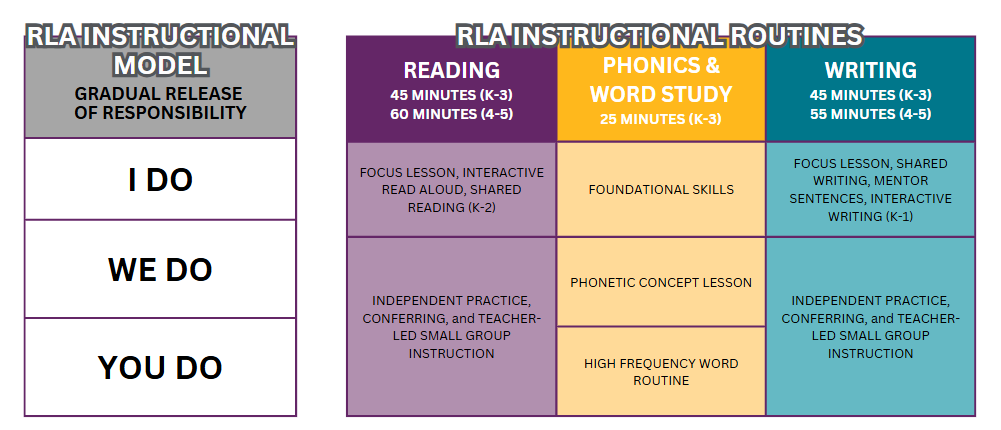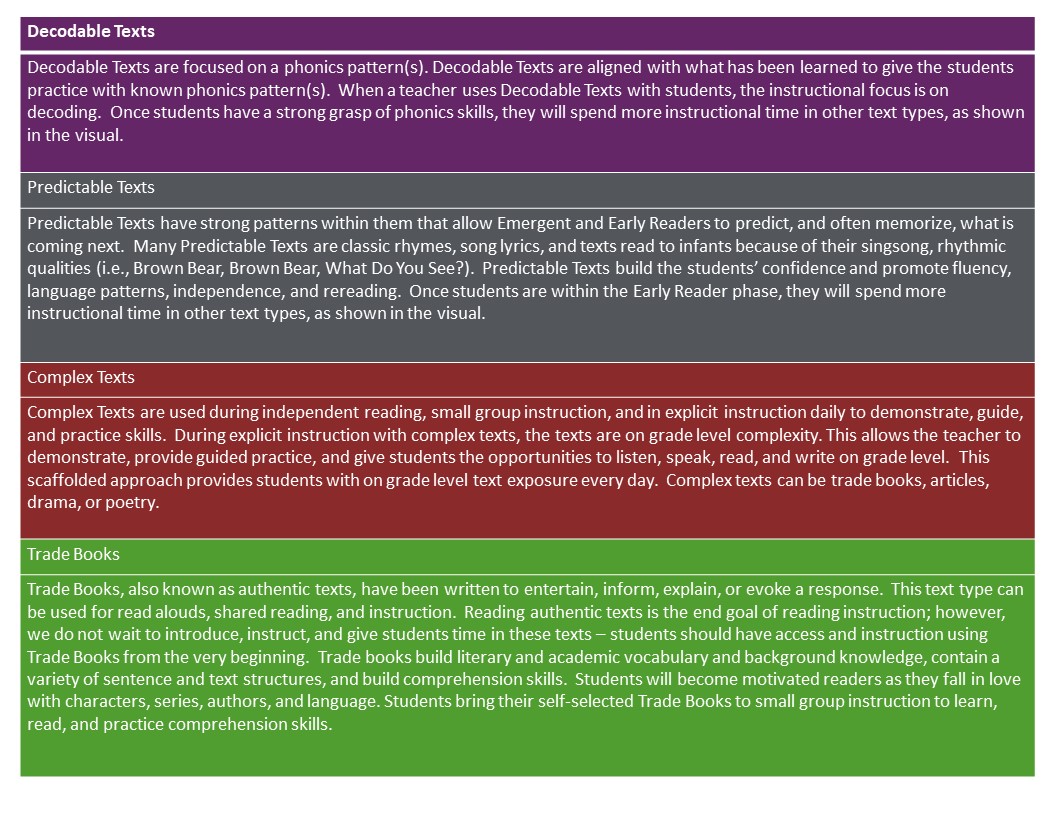Teaching and Learning
Page Navigation
- Department Home
- Literacy - Curriculum and Instruction
- STEM - Curriculum and Instruction
- Multilingual Programs
- Gifted and Talented
- Assessment
- Instructional Resources
- Course Selection Guides and Resources
- School Supply Lists
- Campuses Implementing Standards Based Grading
- Pre-K-1st Grading Guidelines
- State Mandated Recognition Days
- Artificial Intelligence
- Premier Opportunities
-

The Fort Bend ISD elementary language arts & reading curriculum is 100% aligned to the Texas Essential Knowledge and Skills (TEKS) and the science of reading. The curriculum is “balanced” in that it includes all the components of literacy – reading, writing, phonics, and word study while integrating listening, speaking, and thinking. All literacy components are necessary to build a life-long, successful reader and writer. By including all components of literacy, students gain the skills required to learn to read and read to learn. FBISD literacy curriculum and instructional practices are research-informed and in a continuous improvement cycle aligned with longitudinal, multi-year data as literacy instructional practices must be responsive to the differentiated needs of all FBISD students.
Questions about Literacy Instruction in FBISD
-
What does Language Arts & Reading instruction look like in FBISD?

-
Elementary students have 115 minutes of ELA instruction a day.
-
While there are time recommendations for each component of the ELAR Instructional Model, it is important not to think of the pieces as isolated components.
-
Everything the teacher does throughout the day connects to the same goal—to grow literate students.
-
The literacy instructional model integrates time for English Language Development (ELD) in accordance with the bilingual framework.
-
Reading, writing, listening, speaking, and thinking are connected and thought of as such. What happens in reading connects to writing. What happens in writing connects to word study, and so on.
-
-
What is phonics instruction?
Phonics instruction involves teaching the relationships between letters and sounds. During a phonics lesson, students might learn, for example, the sound for the letters “sh” or that some vowels can be short or long.
- Phonics instruction should lead to automaticity of reading words, allowing readers to focus on meaning. Automaticity is reading without sounding out and writing without having to stop and think about each letter sound.
- Phonics instruction begins each day with foundational skills, such as phonological awareness activities. Phonological Awareness is the ability to hear, identify, and manipulate sounds in spoken language.
- Phonics instruction begins with learning, practicing, and applying the Alphabetic Principle in the early primary grades. The Alphabetic Principle is the ability to associate sounds with letters and use those sounds to form words.
- Phonics instruction transitions into learning, practicing, and applying spelling patterns and word study and analysis.
- During and after phonics instruction, readers have opportunities to apply their phonics skills in reading and writing.
Moats, 2012; Ehri, 1984; Blevins, 2017; Duke, 2021.
-
Why is comprehension instruction important?
Comprehension instruction refers to the process by which the reader constructs or assigns meaning by interacting with the text.

Comprehension instruction...
- helps students become independent, strategic, and metacognitive readers.
- helps students develop, control, and use a variety of strategies to understand what is being read.
- begins as soon as students begin to read.
- is designed to help students become aware of text organization.
- prompts students to read a wide variety of text types and genres.
- tends to the overlap between word recognition and language comprehension and the important processes that bridge these skills (i.e., reading fluency, vocabulary).
Texas Education Agency (TEA), 2017; Duke & Cartwright, 2021
-
What types of text are used in reading instruction?
Developing readers require a variety of types of text.

Emergent and Early readers need to develop fluent word recognition and comprehension skills to become fluent readers. We use varied types of text during instruction for different purposes with the end goal of students being able to pick up a book of their choice and successfully read and enjoy it.


